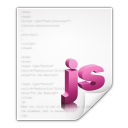_GUIRegisterMsgEx (UDF) - Like native, but for controls.
-
Similar Content
-
WMCDIPC ( x32/x64, user/admin, self triggering, slow WM_COPYDATA IPC )
By argumentum,
- wm_copydata
- ipc
- (and 3 more)
- 5 replies
- 1,714 views
-
- 0 replies
- 2,941 views
-
- 2 replies
- 2,249 views
-
- 2 replies
- 3,293 views
-
- 5 replies
- 7,630 views
-






Recommended Posts
Create an account or sign in to comment
You need to be a member in order to leave a comment
Create an account
Sign up for a new account in our community. It's easy!
Register a new accountSign in
Already have an account? Sign in here.
Sign In Now